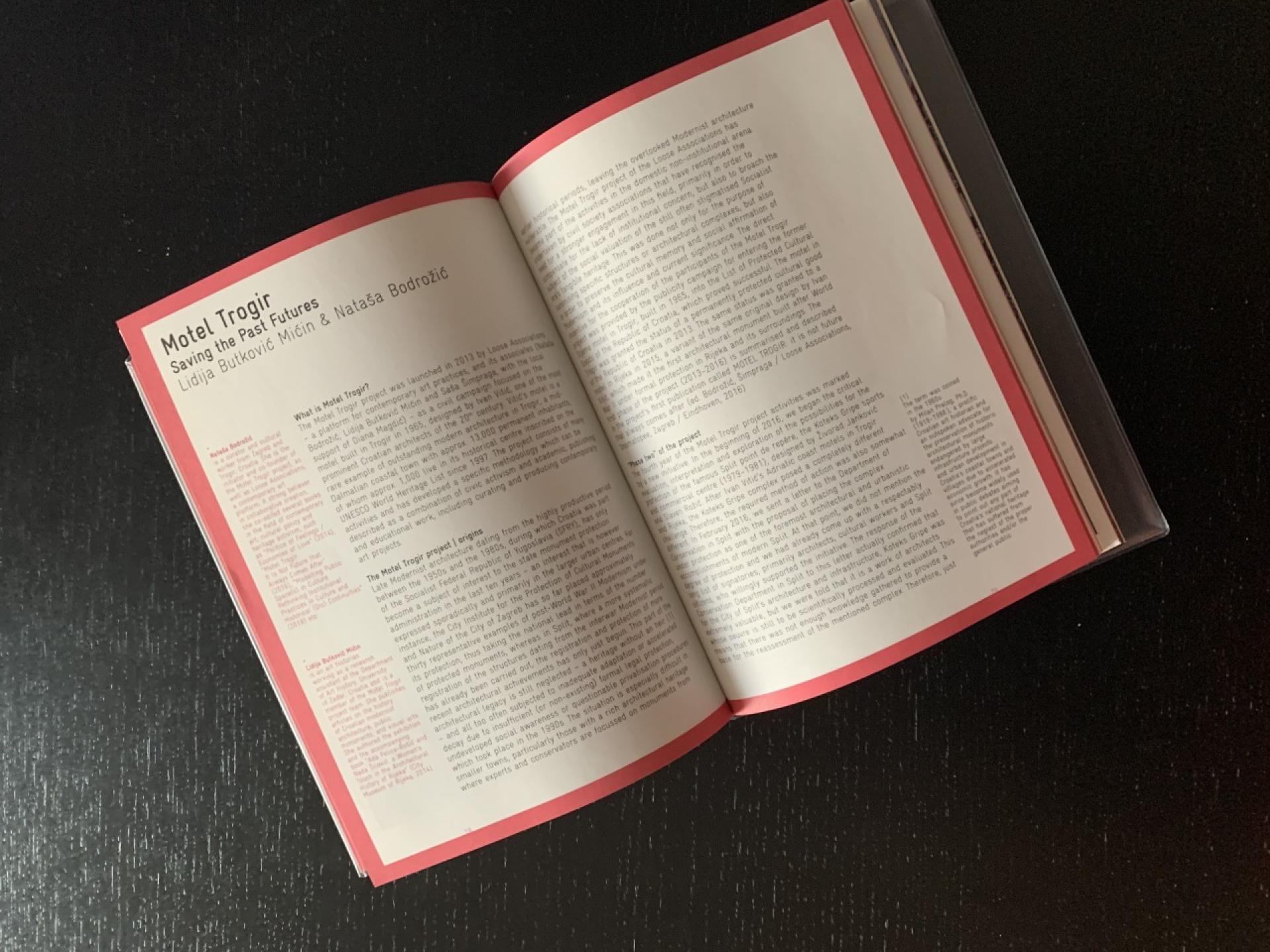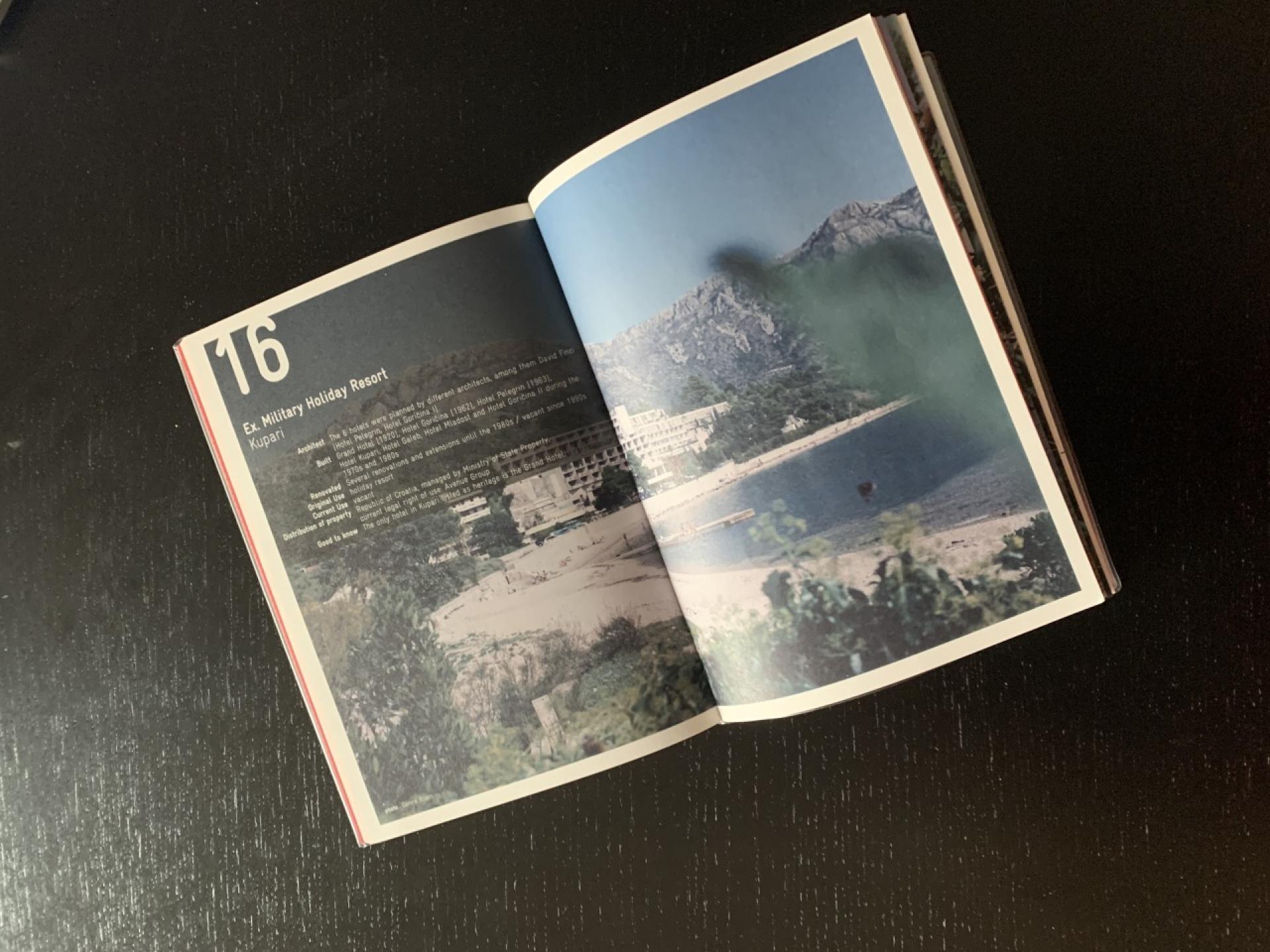A. Dika & B. Krejs: Mapping The Croatian Coast
Mapping The Croatian Coast; A Road Trip to Architectural Legacies of Cold War and Tourism Boom. Edited by Antonia Dika & Bernadette Krejs, Research Unit of Housing and Design, Institute of Architecture and Design, TU Wien & Jovis, 2020

“Come and see the Truth” was one of the first slogans to entice tourists to visit the socialist self-government and non-alined Socialist Federal Republic of Yugoslavia. In so far predominantly rural area underwent rapid touristic urbanisation of the 6,000 kilometres of coastline along the Adriatic highway, the picturesque coastal road from the 1960s, impressive hotel complexes and secret military posts emerged at the same time in just few years.
Even though the buildings were state owned mostly from trade unions, state administrative unit, south organisation, socialised company, the Yugoslav National Army, social tourism developed where the coastline was defined as common property to which every citizen must have access. Domestic Tourism was a tool for nation-building and reconciliation, enabling the population to discover and learn to respect different cultures in multi-ethic federation. One of the reasons that natural resources and landscape in Croatia have largely been kept intact comparing to Montenegro or Bulgaria. Architects brilliantly understood and support sites of the tourist landscapes, developing new types of tourist resorts for social tourist purposes. For the first time, masses of people were able to visit the coastal towns that were beforehand only accessible by sea with the safety of a car.

After the Holidays After the Fall, Modernism In-between and Dobrović in Dubrovnik, Mapping the Croatian Coast leads through the fascinating architectural heritage from the time of the tourism boom and of the Cold War in Croatia. The authors from the research department of housing and design of TU Vienna outline routes to these hidden architectures, describe their development, their role in the non-aligned state of Yugoslavia, their decline, and their transformation.

The Yugoslavia’s cosmopolitanism also called for luxuriously conference hotels at the coastline to show off international celebrities, politicians and the movie stars hired by Yugoslavia’s blooming film industry. Between Communism and the American Way of Life, international guests were invited to enjoy the alternative fruits of Yugoslavia’s Third Way in many of solitary high-rise hotels with high standards, glamorous interior design and modern artworks were built near the coastline of the Adriatic Coast.
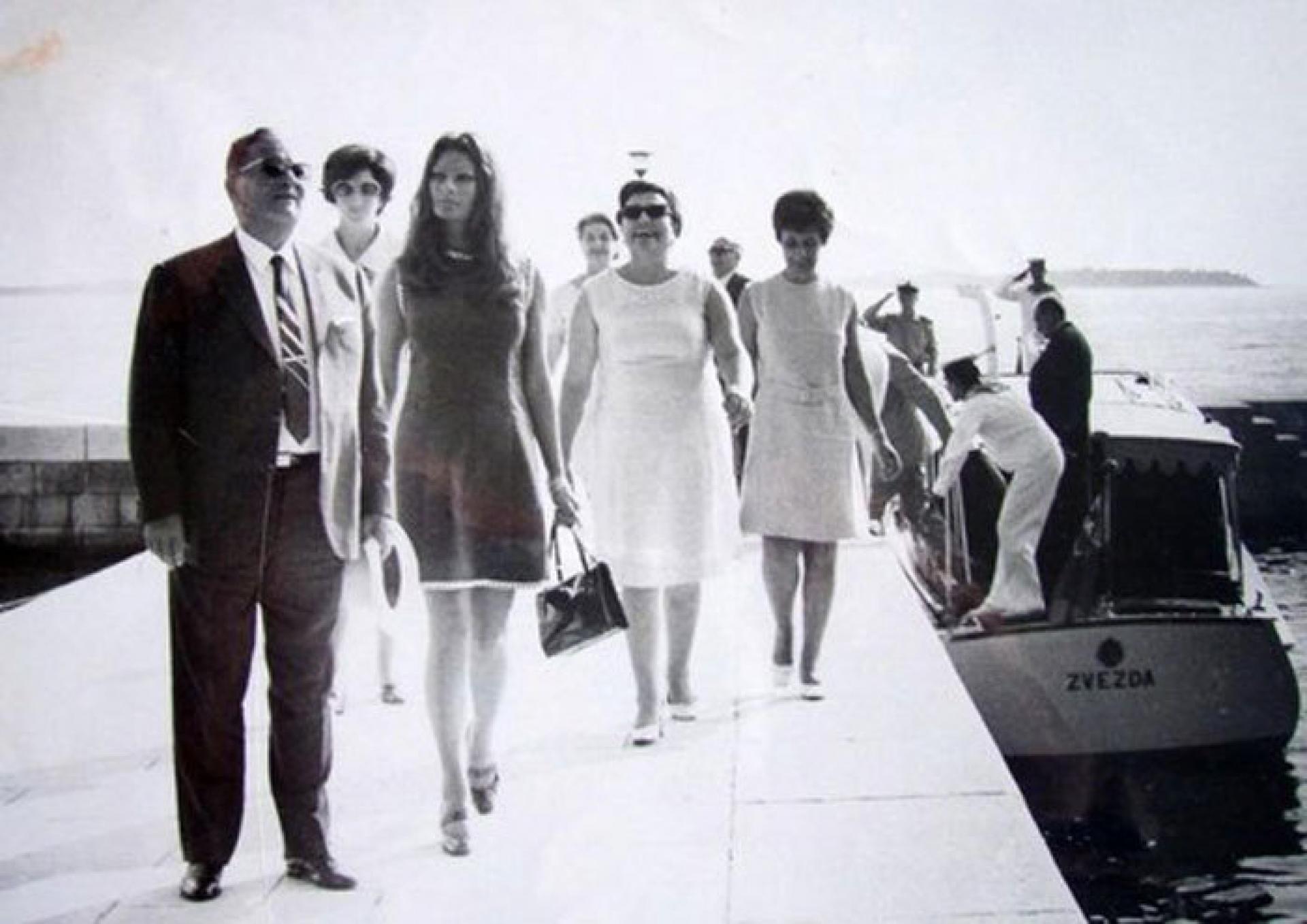
Josip Broz Tito with Sophia Loren.
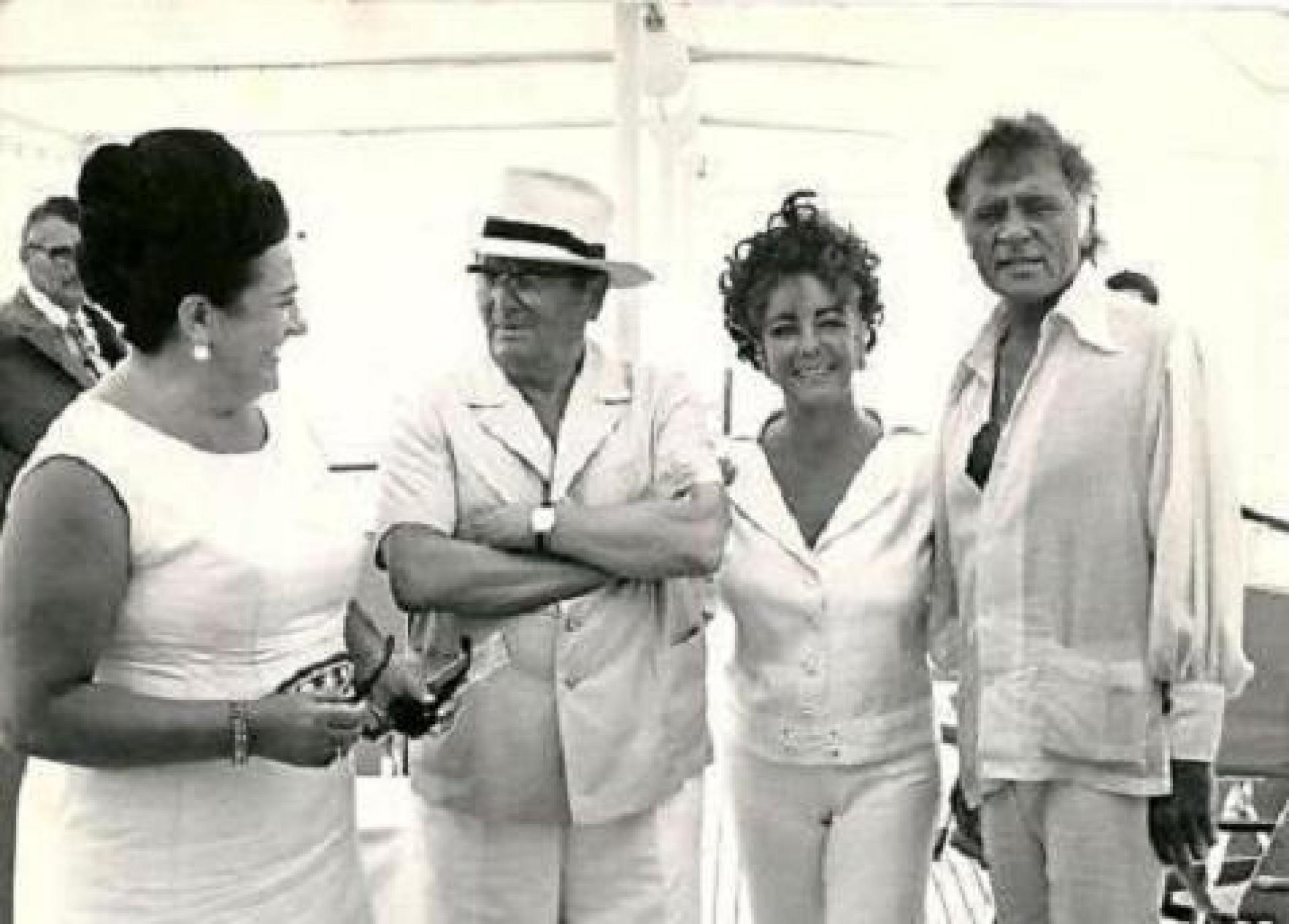
Jovanka Broz, Josip Broz Tito with Elizabeth Taylor and Richard Burton.

Due to various aggravating circumstances, the construction of the Hotel Neboder by Josip Pičman, Alfred Albini took more than 10 years.

The Haludovo Palace, an ensemble of various architectural typologies from modern to postmodern as a new tendency in the region’s tourism architecture.

Pelegrin hotel’s architecture drew considerable acclaim in the 1960s new tendencies, defined by a certain detachment from the tradition of modernism.
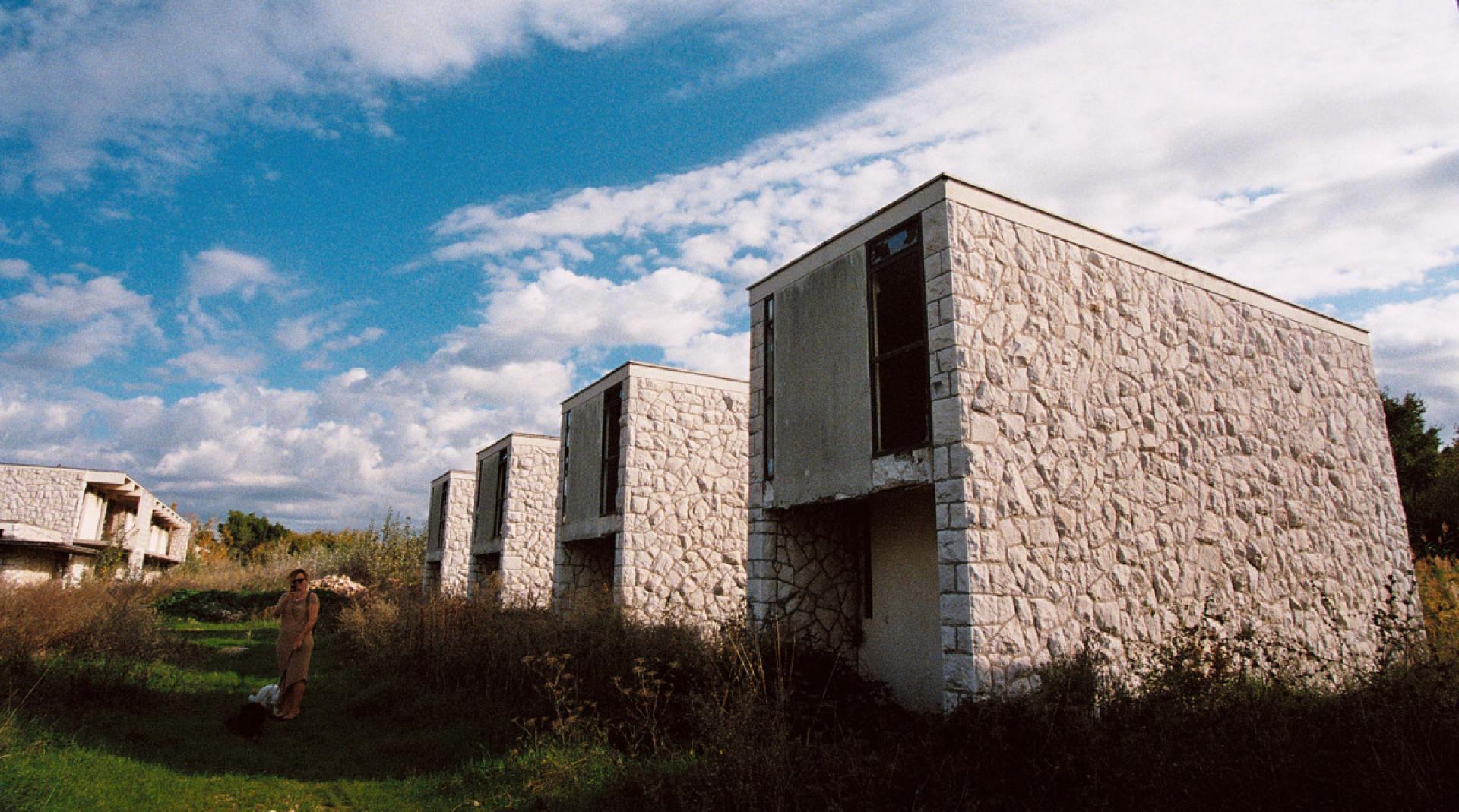
Motel Trogir is an exception to the typology of Adriatic tourism, and it is argued that the idea of such buildings in the Yugoslav socialist society came through American movies.
Instead of peaceful transformation from Yugoslavia’s Third Way economy to pure market capitalism, the Federation was shattered by nationalist aspirations, and years of warfare and ethnic cleansing, starting during the summer of 1991. A few hotels suffered from attacks during the war and almost 80% of them were used to accommodate war refugees. Within eight removable folding maps that examine special phenomena of the coastal area and make the book a practical guide on the journey to the hidden gems of the Croatian Adriatic coast you are almost ready for the journey!
-
Mapping The Croatian Coast; A Road Trip to Architectural Legacies of Cold War and Tourism Boom.
Edited by Antonia Dika & Bernadette Krejs
English, Softcover, 144 pages, 14.8 x 21 cm + 8 double-sided folding maps, 108 col. and b/w, ISBN 978-3-86859-648-9
Published by the Research Unit of Housing and Design, Institute of Architecture and Design, TU Wien & Jovis, 2020
